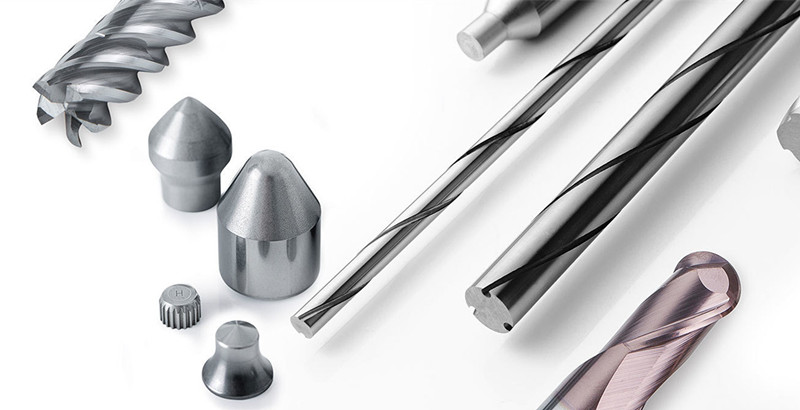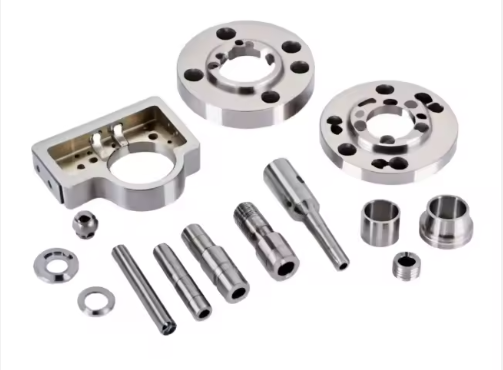Tungsten carbide vs titanium and their performance and uses.
Metal materials are one of the materials widely used in industrial production and daily life. Among the many metal materials, there is a metal material known as the “most wear-resistant” that has attracted much attention. This metal material has excellent wear resistance and can maintain a stable surface state in harsh environments. It has been widely used and favored.

First of all, one of the most wear-resistant metal materials is tungsten carbide. Tungsten carbide is a compound composed of tungsten and carbon with extremely high hardness and wear resistance. For example, rods and tungsten carbide rods and tungsten carbide plates are usually used as tool materials such as knives, drills, abrasives, and stamping dies. They can maintain good wear resistance under high-speed friction and heavy load conditions, so they are widely used in mechanical processing, mining and other fields.
The following table is the performance table of tungsten carbide:
| WC | Co | Grain size (μm) | Hardness(HRA) | Density(g/cm³) | TRS (Mpa) |
| 70%-97% | 3%-30% | 0.2-7.9 | 82-94 | 13-16 | 1000-3000 |
Secondly, titanium alloy is also a metal material with excellent wear resistance. Titanium alloy has good corrosion resistance and high strength, as well as high hardness and wear resistance, so it is widely used in aerospace, shipbuilding, medical equipment and other fields. The wear resistance of titanium alloy enables it to maintain stable performance in harsh environments, and has received widespread attention and application.
The following table is the performance table of titanium alloy:
| Density(g/cm³) | Tensile (Mpa) | Yield (Mpa) | Elastic Modulus(GPa) | CTE((10^-6/K)) | λ (W/(m·K)) |
| 4.43 | 830-880 | 750-790 | 110-114 | 8.4-8.7 | 6.7-7.2 |
Thirdly, Chemical formula: TiC (Titanium Carbide), molecular weight: 59.89. Gray metallic solid with a face-centered cubic lattice. Melting point: 3140±90 °C, boiling point: 4820 °C, relative density: 4.93. Hardness greater than 9. Insoluble in water, soluble in nitric acid and aqua regia. Stable in air below 800 °C, eroded by air above 2000 °C, and reacts with pure O₂ at 1150 °C. Preparation: Obtained by the high-temperature reaction of a mixture of titanium powder (derived from the hydrogen reduction of TiO₂) and carbon, or by heating compacted blocks of TiO₂ and carbon powder in an electric furnace at 2300-2700 °C under an H₂ or CO atmosphere for carbonization.
| Density(g/cm³) | Bending strength (Mpa) | Mohs Hardness | Elastic Modulus(GPa) | CTE((10^-6/K)) | λ (W/(m·K)) |
| 4.93 | 507-855 | 9-10 | 470 | 7.74 | 21 |
Applications include:
Cutting tools: As a main component or coating of carbide tools (e.g., turning tools, milling cutters) for high-speed cutting of steel.
Wear-resistant components: Such as mechanical seal rings, wire drawing dies, and sandblasting nozzles.
Coating material: Forms an extremely hard titanium carbide coating on the surface of tools and molds through physical or chemical vapor deposition (PVD/CVD) processes, significantly extending their service life.
Aerospace: Used in manufacturing components requiring high-temperature resistance and wear resistance.
Reinforcement phase: Added as reinforcing particles to metal-matrix or ceramic-matrix composites to enhance the strength and hardness of the base material.

It is actually difficult to give a clear answer about the life of titanium carbide, tungsten carbide and titanium alloy, because it is closely related to the specific use environment, load conditions, maintenance and other factors. Under appropriate conditions, both alloys can show a long service life. However, in some specific scenarios, tungsten alloy may have a longer service life due to its high hardness and high wear resistance; in other scenarios, titanium alloy may have better durability due to its light weight and high strength.
In summary, tungsten carbide vs titanium are both metal materials with good wear resistance, and they have been widely used in different fields. The wear resistance of these metal materials enables them to maintain stable performance in harsh environments, providing important support for industrial production and daily life. We need to make comprehensive considerations based on specific application requirements, environmental conditions and performance requirements. Only in this way can we give full play to the potential of these two alloys and achieve the best performance and service life.
